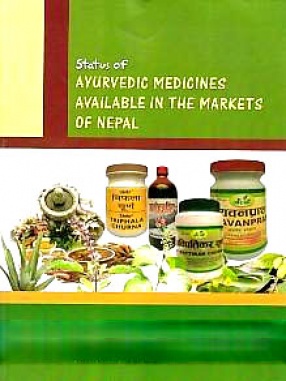Indo-Tibetan medicine enshrined in Rgyud bzi which was originally composed in Sanskrit and still available in Tibetan is a veritable treasure of centuries of accumulated experience with rational fundamentals and scientifically analyzable therapeutic measures meant for the preservation and promotion of positive health, and prevention and cure of obstinate and otherwise incurable diseases. The present effort is to give the Sanskrit equivalents of this text on the basis of Ayurvedic texts like Vagbhata's Astanga-hrdaya of which both the original Sanskrit form and Tibetan translation are available. On the basis of this equivalent terminology, the text of Rgyud bzi is rendered into English in a narrative form. In future, this will also help in restoring the original Sanskrit text, which, as the opening sentence of this translated text shows, was, known as Amrta-hrdaya-astanga-guhyopadesa-tantra. This encyclopaedia will be published in 15 volumes. The present first volume contains the first part of this four-fold text. It is the smallest but the most important part of this invaluable work inasmuch as it presents in nut-shell the entire text in the form of a tree having three roots, nine trunks, forty seven branches, 224 leaves, two flowers and three fruits along with a vivid picture of the flora and fauna of the mountain ranges in the South, North, east and West of the dron khyer or city called Lta-na-sdug (lit. the place which is beautiful to look at) identified with either Varanasi or Buddha Gaya, the abode of the Lord Buddha. These four mountains ranges are the Vindhyas, the Himalayas, the Gandhamardana mountain and the Malaya mountain. It also describes the various categories of retinues and their names who heard the medical teachings form the emanations (nirmana-kaya) of Bhaisajya-guru incarnation of Lord Buddha. The text is composed in both prose and verses. In the extant editions of Rgyud bzi, these prose paragraphs and verses are not numbered. These are numbered in the present volume to facilitate referencing. The Tibetan text is Romanised in the present volume. Below the Tibetan terms, their Sanskrit equivalents are given in Devanagari without case endings. English translation is provided in a narrative form giving the number of the Roots, Trunks, Branches and Leaves to which the text refers. There are five appendices in the book. Appendix-I describes the Metaphoric tree with its roots, trunks, branches, leaves, flowers and fruits in a graphic form; Appendix-II provides information about the titles of chapters in Tibetan and their Sanskrit equivalents of the entire text; Appendix-III provides the glossary of technical and other terms used in these six chapters of the first part of the work with their Sanskrit and English equivalents; Appendices IV & V present cross references of this glossary in Sanskrit-Tibetan-English, and English-Tibetan-Sanskirt. The present second volume contains twelve-chatpers from Bsad pa’i rgyud (skt.:Akhyata tantra). Ch. I is in the form of a dialogue between the incarnate preceptor called Rig-pa’i Ye-es (Skt.: Vidya-jnana) who emanated from the Body of Lord Buddha and the Sage Yid-las-skyes (Skt.: Manasija). The contents of the Bsad-pa’i Rgyud or Akhyata-tantra (Explanatory text) are described in brief in this chapter. Ch. II describes the embryology and maternity including anatomical details of the body. In this chapter, details of the development and growth of foetus in each and every week are furnished. In Ch. III different parts including organs of the body are described with similes and metaphoric illustrations. Ch. IV describes details of the anatomy of the body including bones, muscles, veins, arteries, joints, tendons, hair, solid visceras, hollow visceras, channels (srotas) and vital spots (marmas). Ch. V elaborates functions of different types of dosas, dhatus (tissue elements), malas (waste products) and agnis (enzymes responsible for digestion and metabolism). Ch. VI is on classification and categorization of an individual on the basis of age, sex, prakrti (physical constitution and psychic temperamenmt). Ch. VII elaborates signs and symptoms of bad prognosis (arista laksanas)…..
Polytherapic Medicinal Plants and Spices : Post Harvest Management and Export Potential
Man has now realized the ...
$95.40
$106.00








There are no reviews yet.